Art and craft between stitches
One side is an adorable panda eating bamboo, the other side is a fluffy white cat; one side is the traditional Chinese painting style, the other side is the Western oil painting style; and one side is made in the Chinese silk tapestry woven technique, the other side is the embroidery technique. These are all rendered in a Suzhou double-sided embroidery work which is on display along with more than 150 works at an exhibition at Shenzhen Museum’s Ancient Art Division.
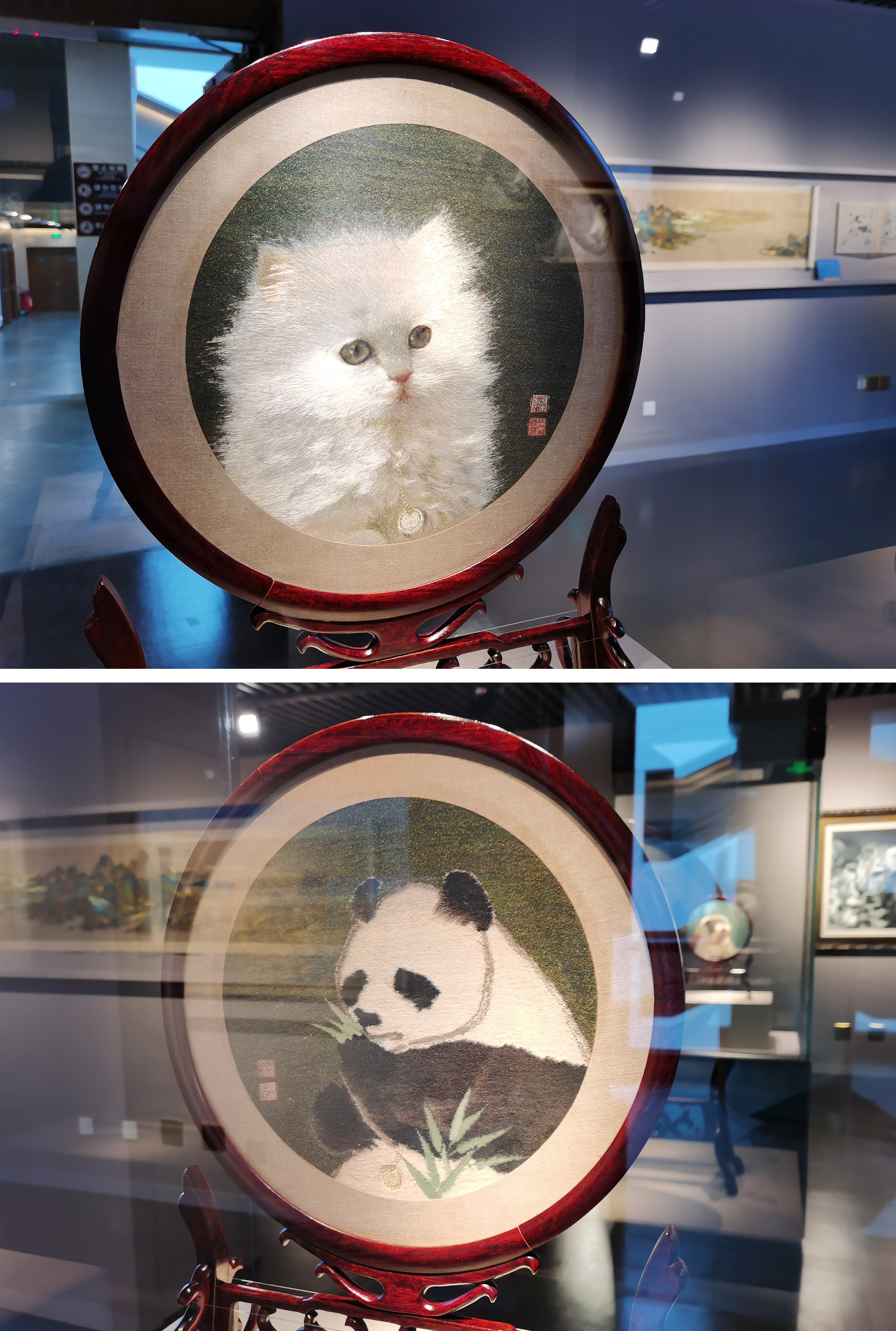
A combined photo shows two different patterns on two sides of a Su embroidery work. Cao Zhen
In addition to the panda-cat work which was made in 1985, visitors can admire more amazing Suzhou double-sided embroidery works in which stitching takes place on both sides of a single fabric. Some double-sided embroidery works have the exactly same designs on both sides, some with the same designs but in different colors and some with two different designs. The embroidery artists skillfully hide all the loose threads and knots. One really can’t tell which side is the front and which is the back.
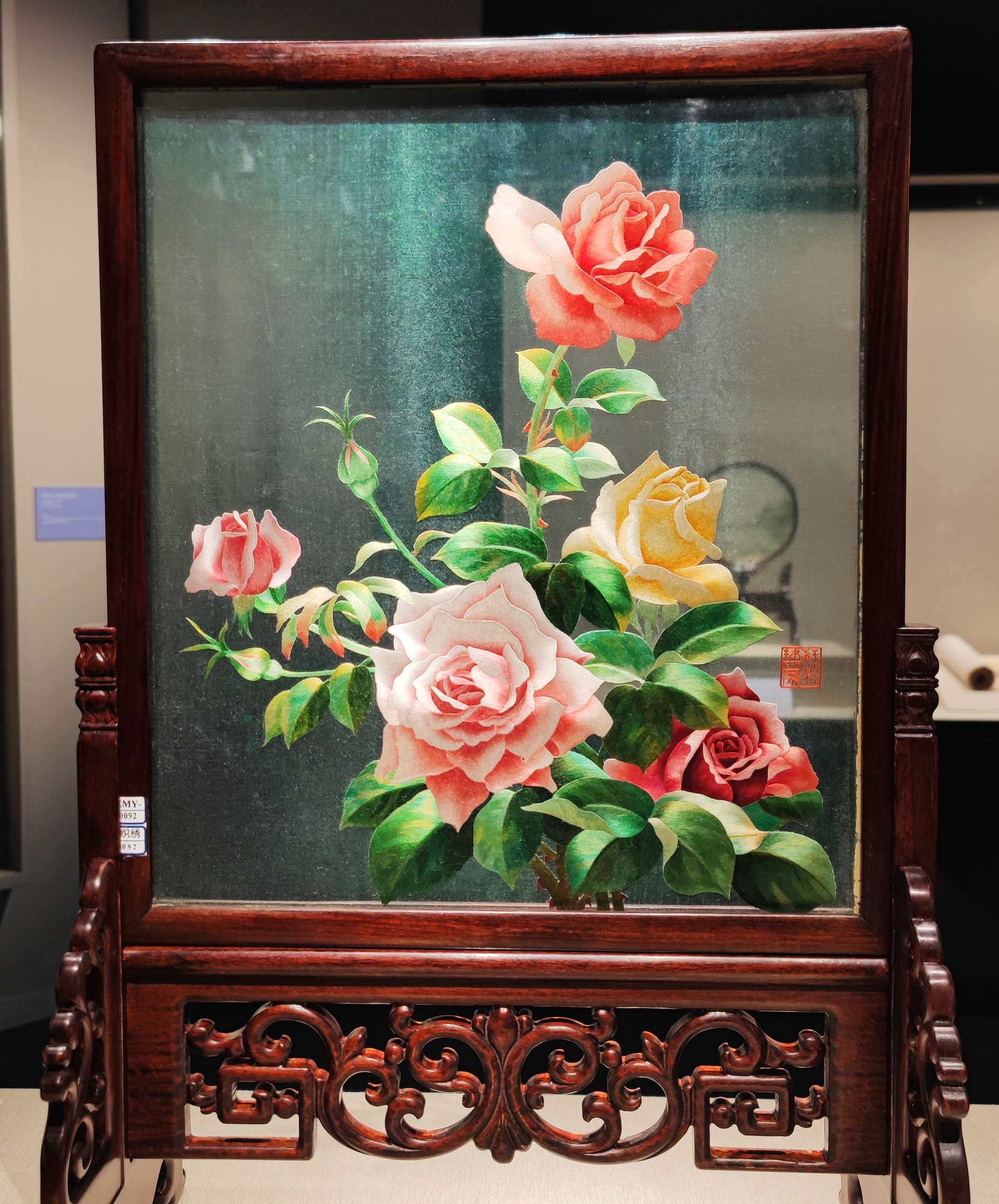
A Su embroidery work made in 1970. Sun Yuchen
Suzhou embroidery or Su embroidery, originating from East China’s Suzhou, has a history of more than 2,000 years. Renowned for its subtle and refined needlework, Suzhou embroidery is praised for its use of the finest threads, dense stitching and beautiful patterns. This form of handicraft has earned a prestigious reputation globally and was listed as a national intangible cultural heritage in 2006.
With exhibits from several Suzhou organizations, the exhibition, running through early June, showcases breathtakingly gorgeous Su embroidery works, drafts and documents from the past 70 years, reflecting its development in integrating the ancient craft with modern concepts, new techniques and diverse styles.
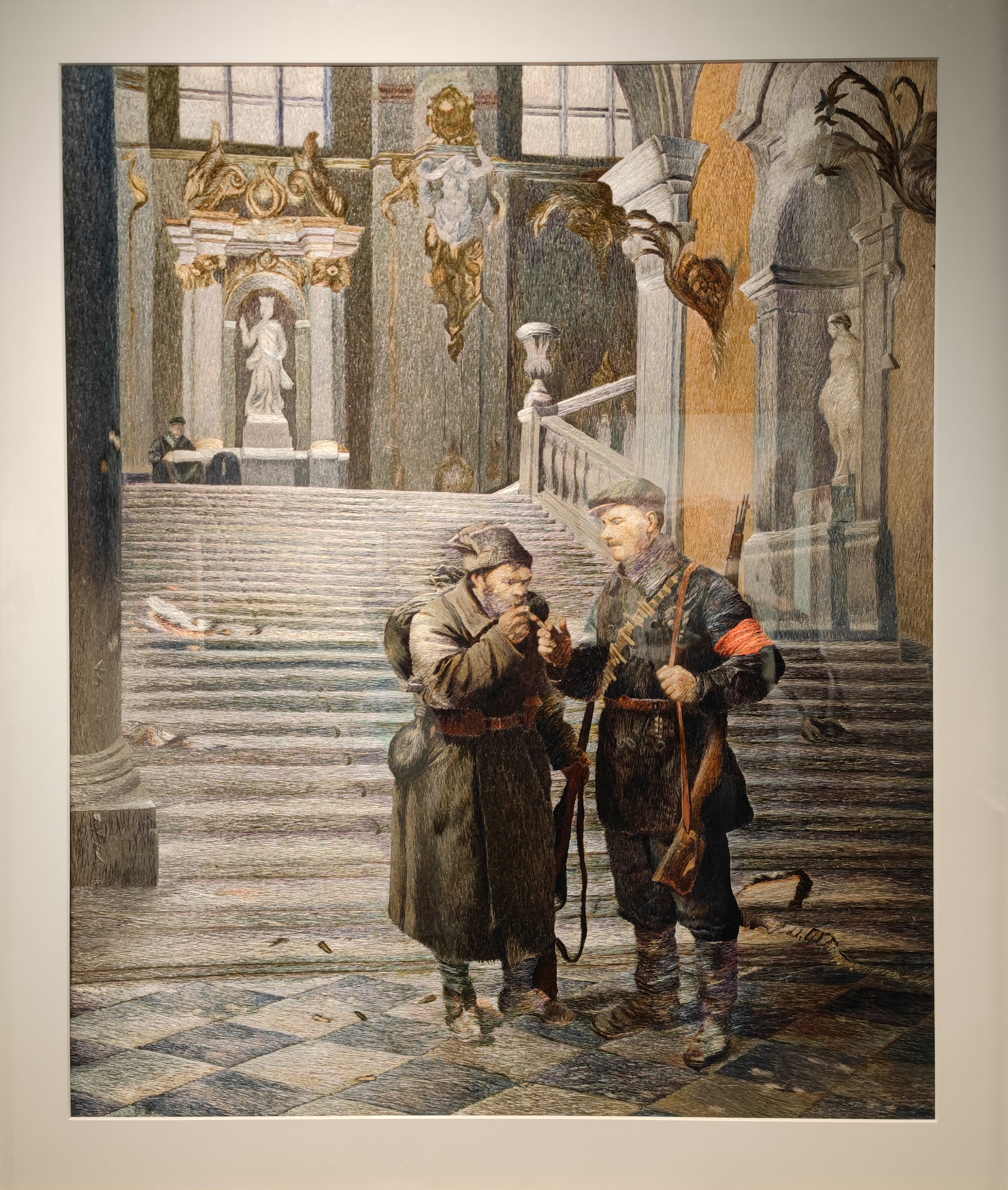
A Su embroidery work depicts the Russian October Revolution in 1917. The work was crafted in the 1970s. Sun Yuchen
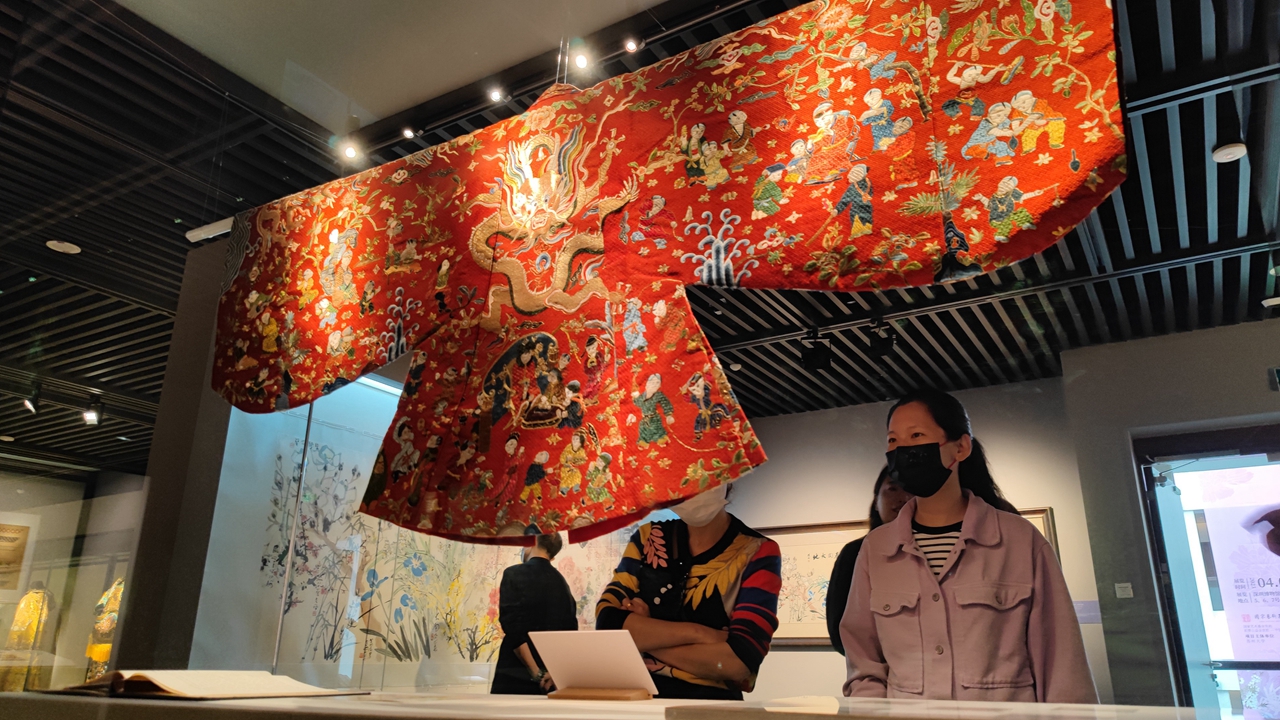
Visitors admire a replica of an embroidery dress from the Ming Dynasty (1368-1644) Dingling Tomb. Sun Yuchen
As one of China’s top four embroidery varieties (the others being centered in Hunan, Guangdong and Sichuan), traditional Su embroidery has mainly focused on such themes as figures, animals, flowers and landscapes. From elegant decoration items to magnificent gowns and cheongsams to hyperrealistic paintings, creative artisans have taken the field to new and exciting places.
This time-endured intangible cultural heritage item has also embraced the new age with more advanced techniques and diverse themes. At the exhibition, visitors can admire recent embroidery works in themes of heavenly bodies, contemporary paintings and photography, employing innovative stitches and patterns to create hazy color tones and irregular lines.
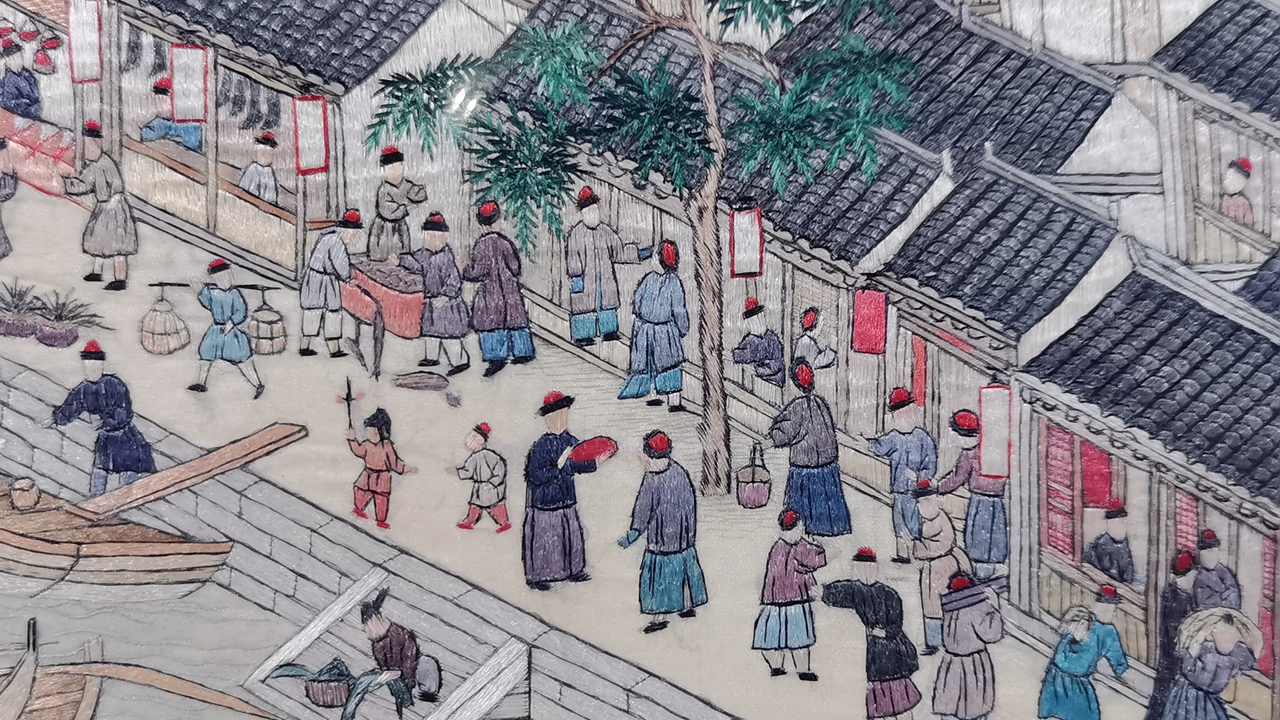
Part of a 14-meter-long Su embroidery work made in the 1980s. Cao Zhen
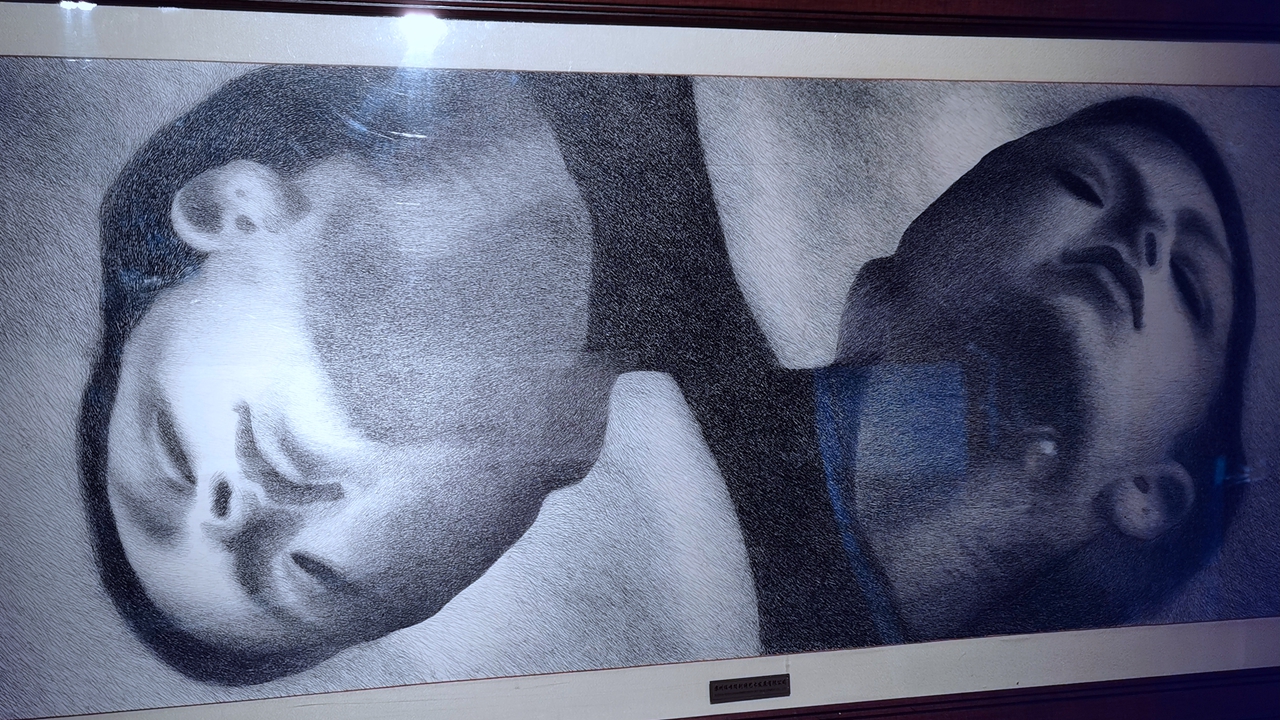
A Su embroidery work inspired by a painting by Italian artist Omar Galliani. The embroidery work was made in 2007. Cao Zhen
Booking: WeChat account “iszbwg”
Venue: Shenzhen Museum’s Ancient Art Division, Futian District (深圳博物馆古代艺术馆)
Metro: Line 9 to Hongling South Station (红岭南站), Exit A